PPFD For Indoor Plants: In-Depth Guide
The ability for plants to thrive indoors has become increasingly important as the world continues to urbanize. PPFD, or Photosynthetic Photon Flux Density, is an essential factor in determining successful indoor plant growth. In this article, we will explore the importance of PPFD and how it can be used to ensure healthy and vibrant indoor plants.
Light is one of the most critical factors influencing photosynthesis in plants; however, not all light sources are equal when it comes to providing optimal growth conditions for them. By understanding what PPFD is and its effects on a plant’s metabolism, gardeners can make better decisions regarding lighting solutions that best suit their needs.
PPFD measures the amount of usable light energy available per second over a given area at any point within a growing space. This measurement helps growers determine if they have sufficient light intensity and spectral quality necessary for supporting vigorous growth in their chosen crop. With this knowledge, gardeners can select proper lighting products and adjust them accordingly to provide the perfect environment for flourishing indoor gardens year-round.
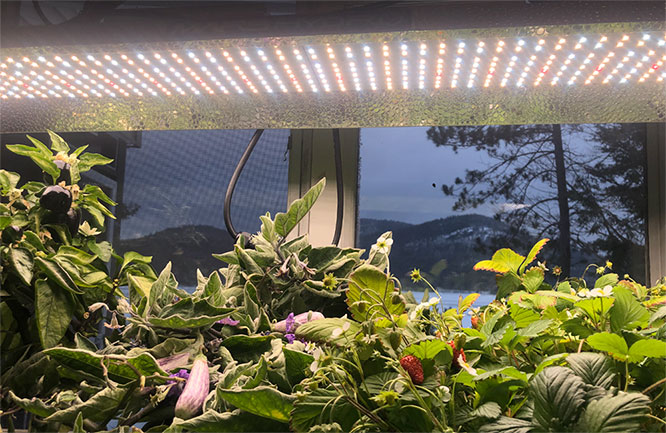
What Is PPFD?
When it comes to indoor plants, PPFD may sound like a strange and unfamiliar acronym. But in reality, PPFD measures an essential element of their growth: the amount of photosynthetically active radiation (PAR) they receive each day. To realize maximum potential for these plants, understanding what this number means is key.
PPFD stands for Photosynthetic Photon Flux Density, which is simply a measure of how much light energy is available per second per square meter at a given location. This measurement helps growers identify the optimal lighting needs for their crops as well as determine when additional illumination might be required. With proper knowledge and application of PAR measurements, indoor gardeners can enjoy healthy and vibrant plants with minimal effort or guesswork.
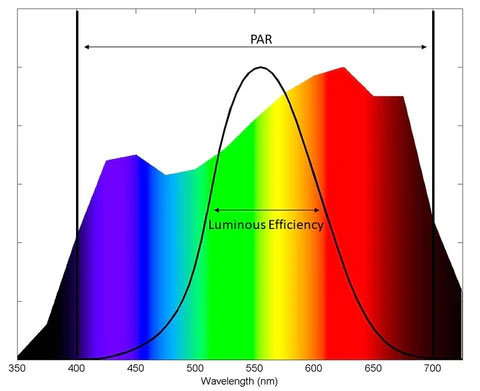
Measuring PPFD In Different Areas
PPFD is an important factor in determining the amount of light available to plants and must be considered when measuring it. Measuring PPFD can be done with specialized tools like a Quantum Meter or integrating sphere, but some basic guidelines are useful for indoor plant growers.
First, it’s important to consider the proximity of the light source to the plants. The further away from the lightsource, generally speaking, the lower the PPFD reading will be. Secondly, any obstructions between the lightsource and the plants should also be taken into account as these can drastically reduce PPFD levels. Finally, different types of lighting have varying effects on PPFD readings; fluorescent bulbs may cast more diffuse light that spreads out over a larger area while LEDs may concentrate more energy into smaller areas resulting in higher localised readings.
By taking all of these factors into consideration when measuring PPFD indoors, you’ll get an accurate estimate of how much usable light your plants are receiving so you can adjust accordingly for optimal growth and health.
Calculation Of Photosynthetically Active Radiation (PAR)
Calculating the amount of Photosynthetically Active Radiation (PAR) is essential for understanding how much light a plant receives and, therefore, its growth potential. PAR is the best way to measure the effectiveness of lighting systems in producing photosynthesis with plants indoors. It measures all wavelengths between 400-700 nanometres that are important to photosynthesis.
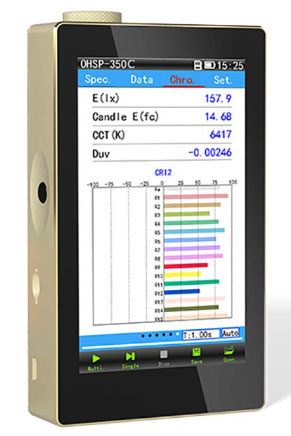
Measuring PAR can be done using specialized equipment such as quantum meters or spectroradiometers. Quantum meters measure light intensity in micromoles per square meter per second (µmol/m2/s), while spectroradiometers measure spectral quality by measuring only certain ranges of visible light over time, usually expressed as watts per square metre (W/m2). Both measurements provide an accurate assessment of PPFD levels, but they have different capabilities when it comes to measuring other types of radiation like ultraviolet and infrared light.
To accurately calculate PAR, one must take into consideration factors such as temperature, humidity and ambient light sources. These factors affect not just the amount of available sunlight but also the spectrum of visible light received by the leaves, which affects photosynthetic activity differently from one organism to another.
Moreover, choosing the right type of lamp for indoor cultivation will ensure optimal results for any given species. With proper monitoring and control of these variables, growers can create ideal conditions for their plants to thrive under artificial lighting regimes inside greenhouses or grow rooms.
Photon Flux Density (PFD)
Once the amount of Photosynthetically Active Radiation (PAR) has been calculated, it is useful to measure and understand Photon Fllux Density (PFD). PFD measures how many photons are delivered over a given area in a certain amount of time. It is expressed in terms of number of photons per unit area per second, or μmol/m²s. The total photon flux density for any indoor plant environment will be affected by several factors such as:
- type of light source
- distance from the light source
- spectral quality
In order to get an accurate measurement, it is important to take into account all these variables.
The ideal PPFD level for plants growing indoors depends on what type of plants you are trying to grow. Generally speaking, higher levels are better for fast-growing large leafed plants like tomatoes and peppers that need lots of energy for photosynthesis. Lower levels may be more suitable for low-light species such as ferns and philodendrons which require less light intensity. However, whatever your specific needs may be, having accurate measurements can help ensure optimal growth conditions and healthy plants.

Benefits Of High PPFD Levels
The benefits of high PPFD levels for indoor plants are manifold. High PPFD values will increase the rate of photosynthesis in plants, leading to faster growth and increased yields. This is especially beneficial for commercial growers who use artificial lighting systems to produce crops indoors, as it can significantly reduce production times while increasing crop quality and yield.
High PPFD also allows for greater flexibility when selecting plant varieties. By varying light intensity, different cultivars can be grown in a single space, allowing for a larger diversity of products with less effort and expense than traditional farming methods. Additionally, since higher amounts of light energy are available during periods of low natural light outside, this provides additional opportunities for extended-season growing or year-round production.
These advantages demonstrate that high PPFD levels provide numerous benefits to both home gardeners and large scale producers alike, making them an essential component of any successful indoor planting system. With proper planning and maintenance, these valuable lighting systems can ensure maximum efficiency and productivity from your indoor growing environment.
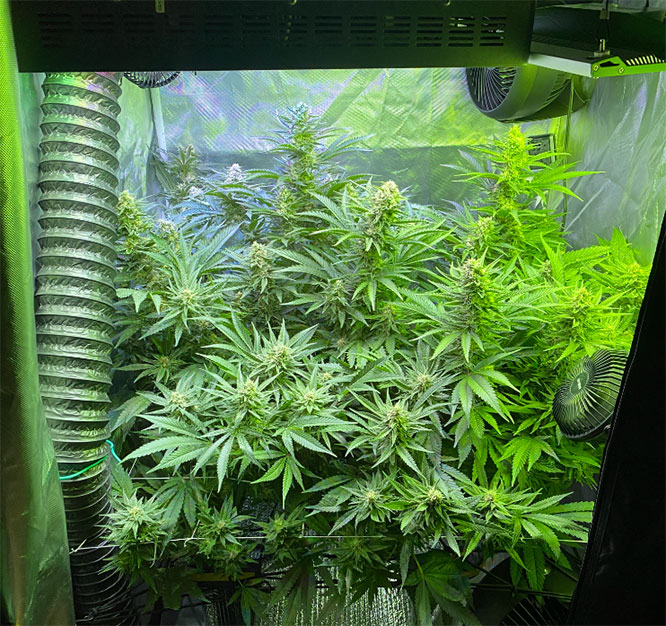
PPPFD For Weed Plants
It is widely believed that high PPFD (Photosynthetic Photon Flux Density) levels are beneficial for indoor plants, but what about weed plants? Can they benefit from the same level of light as other houseplants? To answer this question we must look at some facts:
- Weed plants need more intense light to thrive than other types of houseplants.
- They require a minimum PPFD of 1000 μmol/m2s with peaks up to 1500 μmol/m2s or higher depending on the plant species and growth stage.
- The optimal growing season for weeds usually occurs during summer months when natural sunlight intensity is higher due to longer days and stronger direct sun exposure.
- When using artificial lighting indoors, it’s important to select an appropriate fixture type, such as LED grow lights, which can deliver enough power and uniformity across the canopy area in order to meet the needs of your weed plants.
Weed plants differ significantly from typical houseplants because they have different requirements in terms of both light quantity and quality, so special attention should be paid when selecting the right lighting system for them. A combination of adequate wattage, proper spectrum tuning and well-designed fixtures will guarantee success if you want to cultivate healthy cannabis or any other kind of weed plant indoors without sacrificing yield quality or longevity.
PPFD For Cucumbers And Tomatoes
Cucumbers and tomatoes are two of the most popular home-grown vegetables. When growing these crops indoors, it’s important to ensure they receive enough light for optimal growth and health. This can be measured by PPFD (Photosynthetic Photon Flux Density).
For cucumbers and tomatoes, a PPFD of between 500 – 800 μmol/m2/s is desirable. If inadequate lighting is supplied, the plants may experience reduced fruiting or flowering as well as an overall decrease in quality. Conversely, if too much light is provided, the plants may become overstressed due to excessive heat buildup from photosynthesis.
Providing adequate PPFD requires careful consideration when setting up grow lights. Positioning them at the right height above the crop ensures that both cucumber and tomato plants get sufficient light while keeping temperatures within acceptable limits. With proper planning and setup, you can provide your indoor cucumber and tomato plants with all the light they need to thrive.
PPFD For Pepper Plants And Other Flowering Plants
PPFD, or Photosynthetic Photon Flux Density, is an important factor for the health and growth of flowering plants such as peppers. As a measure of light energy available to plants in the form of photosynthesis, PPFD determines how efficiently plants are able to produce food from sunlight. Plants that receive more than 100-200 μmol m²/s (micromoles per square meter per second) of PPFD generally achieve optimal growth rates and yields.
- In order to meet your pepper plant’s needs for strong and healthy growth, strive for a PPFD reading between 500-700 μmol m²/s inside your growing space.
- If you want large blooms with vibrant colors on your flower varieties, aim for a value between 800-1000 μmol m²/s.
- Aiming higher than 1000 μmol m²/s will help increase overall vigor while promoting bigger root systems and quicker harvests.
For both pepper plants and other flowering varieties, it is essential to ensure adequate PPFD levels throughout their entire lifecycle—from germination through harvest. Poorly lit areas can stunt growth; too much light can cause bleaching or wilting of leaves and flowers.
Achieving the ideal balance isn’t difficult when the proper tools are used to measure the intensity of light within an indoor garden setup. With careful monitoring and adjustments made accordingly, gardeners can provide their plants with just enough light for maximum productivity without going overboard.
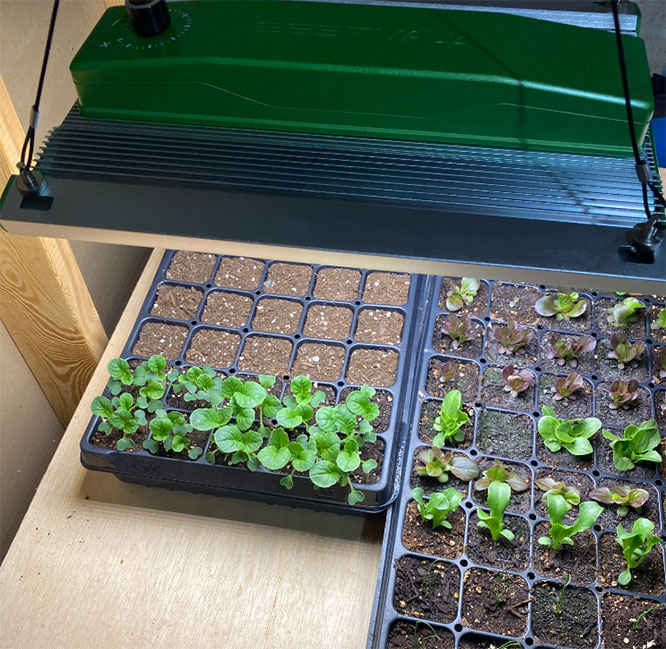
PPFD For Lettuce And Herb
When it comes to the PPFD requirements for indoor lettuce and herb plants, they are not as demanding of light levels compared to flowering plants. In general, herbs prefer a lower level of light than many other types of vegetables. However, the optimal amount depends on the specific type of plant being grown. Lettuce does best with a moderate level of light—at least 250–500 μmol/m2/s PPFD or about 5,000-7,000 lux—and should be placed near windows that receive plenty of indirect sunlight throughout the day.
For both leafy greens and herbs, more direct sunlight is generally better in terms of nutrient uptake and photosynthesis rates. That said, providing too much can lead to burning leaves or wilting due to heat stress. Therefore, when setting up an indoor garden for these particular species, be sure to monitor your lighting situation carefully and adjust accordingly if you start to see signs of excessive exposure.
Factors Affecting The Availability Of Light
When it comes to providing plants with the light they need for photosynthesis, many factors can impact their access to adequate lighting. These include:
- The distance between the source of light and the plant.
- Interference from objects such as walls, furniture or other large items that block direct sunlight from reaching the plants.
- Clearness of surrounding air; dust particles in the atmosphere will reduce overall PPFD levels.
- Time of day – when natural daylight is not available, artificial lights must be used instead.
The intensity and quality of light also play a role in how well plants are able to absorb the necessary energy needed for growth. Different types of lamps emit different spectrums and intensities which affects their ability to penetrate through barriers like leaves and branches, making some areas darker than others within an environment.
This uneven distribution can make it difficult for some species of indoor plants to receive enough light across all parts of their canopy thus impacting its health and productivity over time. To ensure that your plants get enough light, it’s important to consider these factors when deciding where you’ll place them within your home or office space.
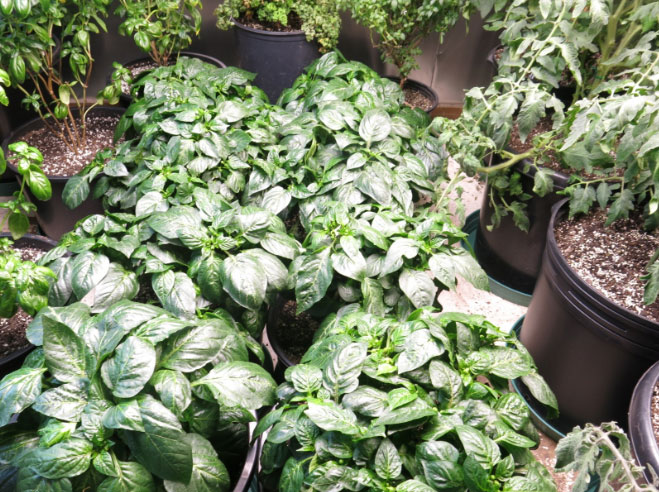
Strategies To Maximize PPFD Levels In Indoor Plants
The sun is the ultimate source of energy for plants, and maximizing its power indoors requires a few simple strategies. To create an environment with high light levels, one should first consider the layout of the space. Positioning lights close to the plants will increase PPFD levels significantly since it reduces shadows and increases direct exposure to illumination.
Utilizing reflective materials such as aluminum foil or Mylar can also be beneficial in directing light onto your plants. These surfaces reflect up to 90% of incident light toward their target while still allowing air circulation around them. For those looking to maximize light output without adding additional fixtures, painting walls white or using a glossy paint finish will help bounce more light into the room and towards your plants.
In addition to considering the physical structure of your indoor garden setup, understanding how different types of lamps emit different wavelengths can make all the difference when creating optimal lighting conditions for photosynthesis.
High-pressure sodium (HPS) bulbs are usually best suited for flowering phase due to their red/orange spectrum which promotes floral growth, whereas metal halide (MH) bulbs produce balanced spectrums that favor vegetative development during early phases. Both HPS and MH have relatively long lifespans compared to other bulb varieties like LED’s or fluorescent tubes but require frequent replacement once they reach half brightness – typically after 6–12 months depending on usage time per day.
LEDs offer superior longevity compared to traditional lamp technologies, however they tend come at higher cost initially yet may save money in the long run through lower wattage consumption and less frequent replacements over time.
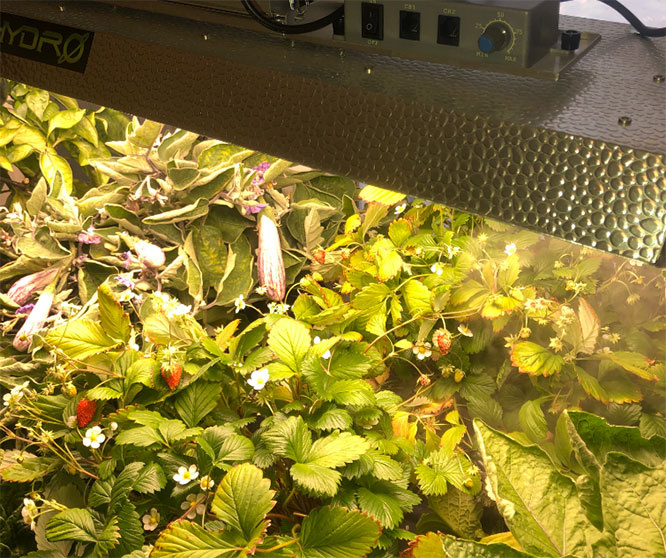
Wrapping Up
In conclusion, PPFD is an important factor in providing light to indoor plants. Measuring and calculating PAR and PFD are essential for determining the optimal light levels for a given plant species. Having high PPFD levels have many benefits such as higher yields, improved quality of crops, and faster growth rates.
While some factors can limit the amount of available light indoors, there are strategies that can be used to maximize PPFD levels in order to ensure successful crop production. Equipment such as quantum sensors or spectroradiometers allow growers to accurately measure PPFD in their grow facilities.
By understanding how much photosynthetically active radiation is needed by indoor plants, growers will be able to make informed decisions regarding their lighting setup and ultimately increase yield potentials.





